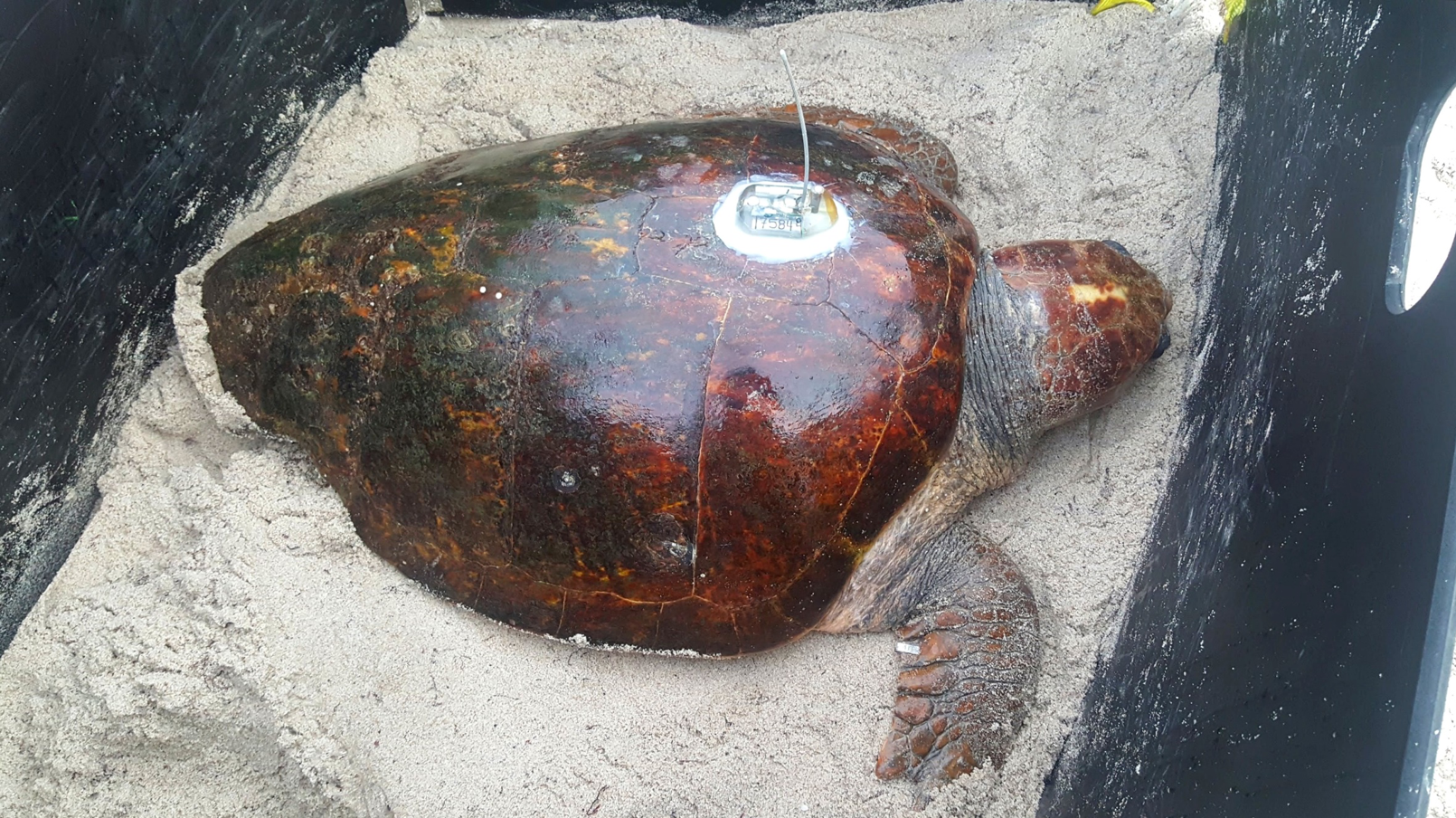about us
Peggy Ruth, a green sea turtle (Chelonia mydas), returns to the ocean after a long night of nesting with a satellite tag securely affixed to her carapace. All activities depicted were performed by authorized personnel on FWC permit MTP-255.
NSU has been involved in sea turtle research and conservation for nearly 30 years, including nesting beach monitoring and conservation, impacts from lighting and coastal renourishment, and diet and food chain ecology. Within Dr. Derek Burkholder’s CMED (Conservation, Movement, and Ecosystem Dynamics) Lab, the nesting sea turtle tagging and tracking project has become the newest part of sea turtle research at NSU!
This project lays the framework for characterizing the turtles that nest on our beaches, as well as provides much needed data about the movement patterns between nesting beaches and foraging grounds (which can be several hundred miles away!). This will result in better conservation of these endangered animals.
What is Satellite Tracking?
Satellite tracking allows scientists a way to precisely follow the movements of an animal, but it also provides additional information about the animal’s environment along the way. Tracking, or tagging, uses tools that do all sorts of things, including measuring the temperature of bird nests or how fast an animal travels from one place to another. By putting satellite transmitters on animals, we can track their movements over large scales (including entire ocean basins!) and learn a lot about their behaviors.
There are several types of satellite tags/transmitters that are used to track animals in the ocean. One of the most commonly used tags for sea turtles is a Smart Position or Temperature (SPOT) tag. This tag transmits its data back to researchers every time the animal surfaces, allowing researchers to follow the track of the animal in real-time.

With advances in technology, satellite tags are getting smaller and lasting longer. In the past, only large animals could carry around a satellite tag without it affecting their behavior. This led to a bias within satellite tracking research since scientists could only study the lifestyles of larger species, sub-adult, and adult individuals. However, with the advent of smaller, lighter tags, scientists can now study the behavior of younger age classes, giving us a more comprehensive view of the animals’ lifecycles.
To learn more about current sea turtle conservation in South Florida, visit the pages of our sister programs, the Broward County Sea Turtle Conservation Program and the Marine Environmental Education Center at the Carpenter House.
